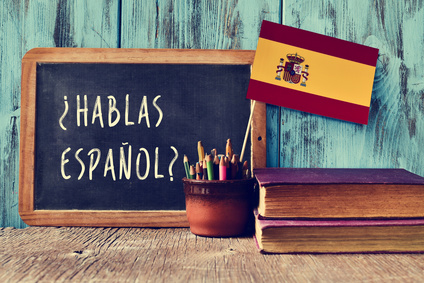
Located on the Iberian Peninsula at the south-western tip of Europe, Spain is a popular tourist destination. The former world power with numerous colonies went through difficult times and changes in the 20th century. The introduction of democracy in 1975 and its accession to the European Union in 1986 gave the country a new lease of life and turned it into a diverse, colorful and sunny tourist destination.
The Kingdom of Spain includes the popular Balearic Islands in the Mediterranean and the Canary Islands in the Atlantic. What few people know: Two North African cities on the Mediterranean coast - Ceuta and Melilla - also belong to Spain, along with some islands near the Moroccan mainland. The town of Llívia in the French Pyrenees is also an exclave of Spain. In addition, Gibraltar at the southernmost tip of Spain is British territory.
Anyone planning a language study trip to Spain should know that the 43.5 million Spaniards speak four different languages. 74% of Spain's inhabitants speak Castilian (Castellano), which we generally refer to as Spanish today. Catalan (Catalàn) is the language of 17% of the Spanish population, Galician (Gallego) is spoken by 7% of the Spanish population and Basque (Vasco) is spoken by just 2% of Spaniards in their everyday lives.
The Spanish culture ensures that a language study trip to learn Spanish is full of unique experiences. Spaniards celebrate the festivals as they fall - that's what they are known for. Some of the most flashy and well-known festivals are "La Tomatina" - the tomato battle - and the "Fiesta de San Fermin" where a multitude of bulls thunder through the streets. Spain also has a lot to offer in other respects: Buildings and architecture steeped in history, bullfights, culinary delights, football and numerous museums attract tourists and Spanish students from all over the world for a language study trip.
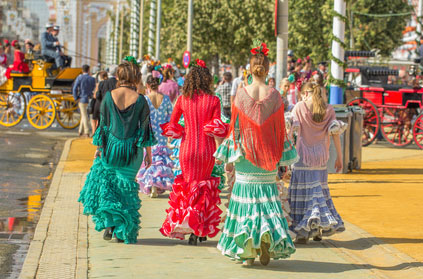
Spain is divided into 17 autonomous communities (comunidades autónomas). There are numerous exciting and thrilling destinations for a language course in Spain. Some are located inland, others on the Mediterranean coast. Vibrant nightlife, expansive nature, large cities, parks, vineyards, beaches, nature, historic cultural sites, picturesque buildings, art, tasty tapas; a language study trip to Spain offers something for everyone...
The cities in Spain could hardly be more different and each place has its own unique charm. Before you decide where in Spain you would like to plan your language study trip, look for information about the individual cities. If you want to see more than one city in Spain, you also have the option of booking several Spanish courses in different locations and traveling the country in between. The diversity of Spain makes this an ideal option for a language study trip.
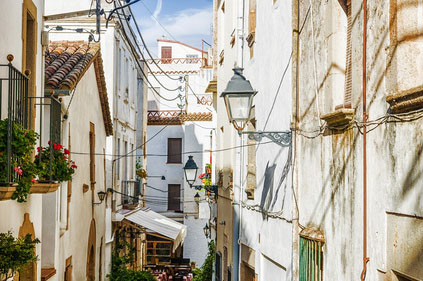
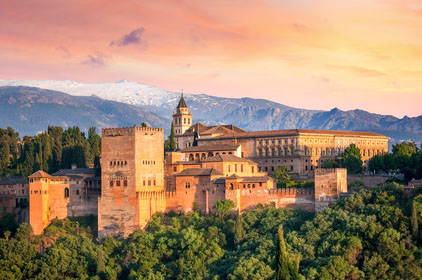

Spain is not very far from Switzerland. By car, you can cross the border from France to Spain in just eight to nine hours from German-speaking Switzerland. If you want to travel to the Balearic Islands by car, you can book a ferry to Mallorca, Ibiza, Menorca or Formentera in Barcelona or Valencia. There are also ferries from one island to another. So if you want to learn Spanish and are planning a language study trip in Spain, you can make the journey in the comfort of your car. This is also very practical during your language study trip as it allows you to explore the surrounding area more quickly and independently. However, a much more frequently chosen means of travel is still the plane. Depending on the destination, Spain can be reached by air from Switzerland in just under two to three hours. The most popular flight destinations are Barcelona, Madrid and Malaga.
Spain does not have a uniform climate, there are different climate zones. Therefore, think in advance about the time of year and where you book your language study trip to Spain. Northern Spain has a temperate and relatively stable climate with average temperatures of 25°C in summer and 10°C in winter. In the higher mountainous regions, summers are cool and short and the winter months are cold. In the central part of Spain, the climate along the coast is oceanic-continental and balanced, with warm summers of around 30°C and mild winters of around 7°C. In the interior, summer temperatures of around 30°C are recorded, with an average of around 7°C in winter. Southern Spain has a subtropical climate with very dry, hot and long summer months, often well above 30°C. In the coldest winter months, Andalusian thermometers usually show pleasant temperatures of around 17°C. The Canary Islands in the Atlantic Ocean have a subtropical climate with hot summer temperatures of up to 50°C! Even at night, the temperature display never drops below 35°C...
Numerous language schools offer a wide variety of courses. The following types of course are very popular for language study trips in Spain:
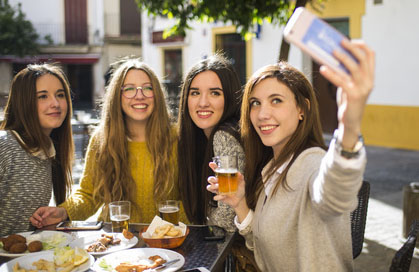
Swiss citizens require a valid identity card or passport to enter Spain. Minors entering Spain alone must carry a valid identity document as well as written permission from their parents.
Spain is generally considered a stable country. Nevertheless, there is a risk of demonstrations, particularly in the major cities. In rare cases, these can lead to riots. Tourists should stay away from such situations and follow the instructions of the local authorities. Recent terrorist attacks have led the Spanish authorities to explicitly point out that there is a risk of terrorist attacks. Theft in Spain occurs frequently and predominantly in crowded places such as promenades, busy alleys and streets, bars, restaurants, the metro or the beach. Travelers should therefore take precautions in this regard.
The cost of a Spanish course in Spain varies from city to city and depending on the school. In most cases, courses are booked and charged on a weekly basis. The longer the language course in Spain lasts, the lower the course price per week. Preparation courses for Spanish diplomas usually last two to three weeks and cannot be extended or customized. An intensive or full-day course costs between 150 and 300 francs per week. Half-day courses and evening courses are correspondingly cheaper. Individual lessons are usually charged separately and cost around CHF 40 per unit on average.

In addition to the course costs, accommodation and meals during the language study trip in Spain must also be taken into account. The cheapest accommodation option is a shared flat or a host family. Some schools also arrange inexpensive shared rooms that are shared with other language students. The outward and return journey, excursions, transportation, sports activities, etc. are also easier on the wallet.